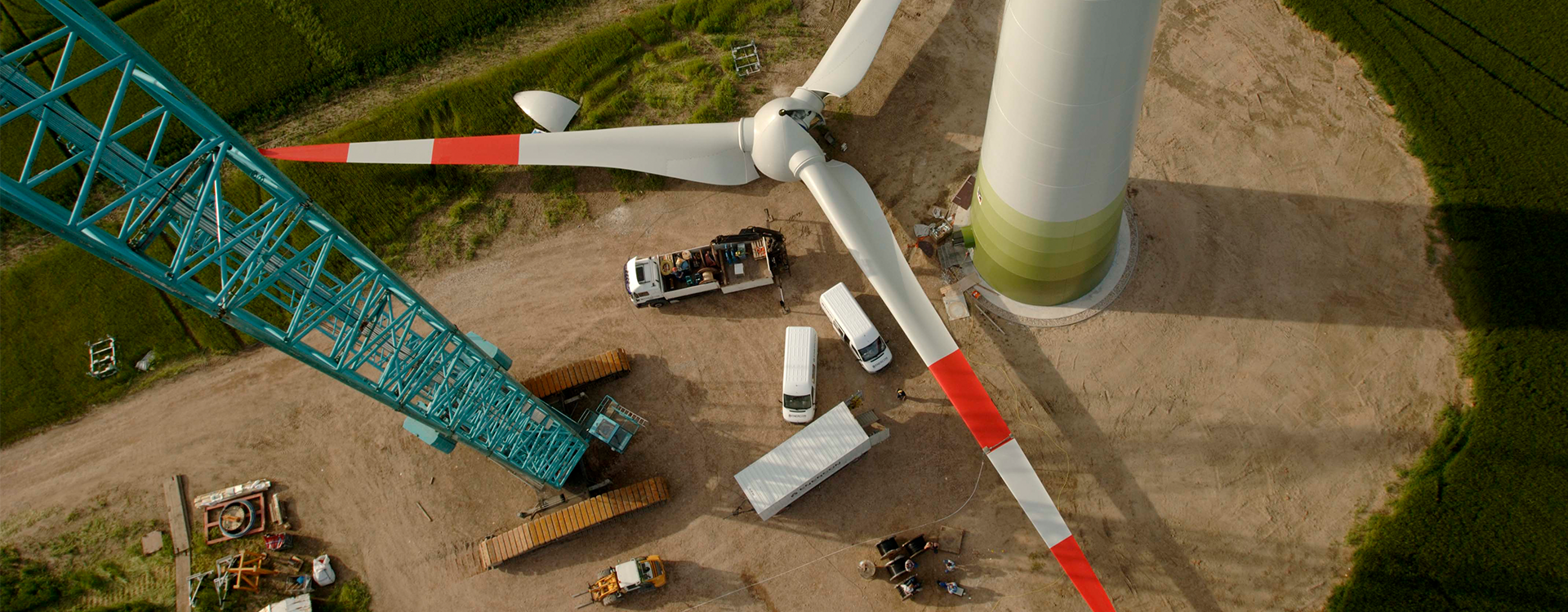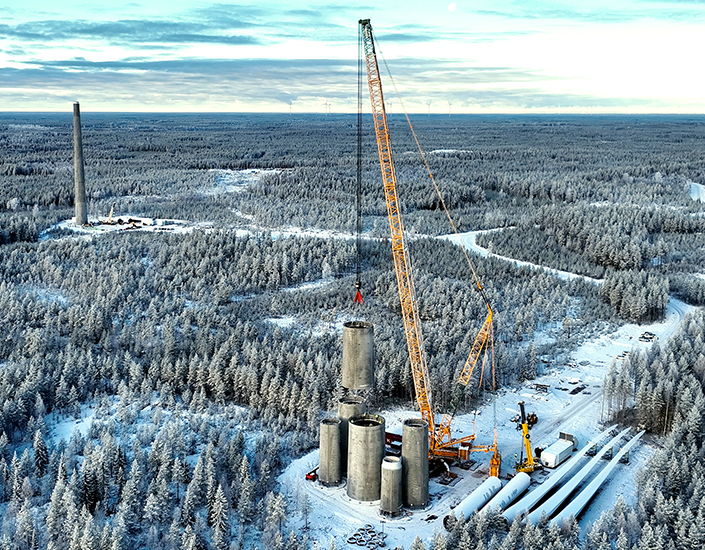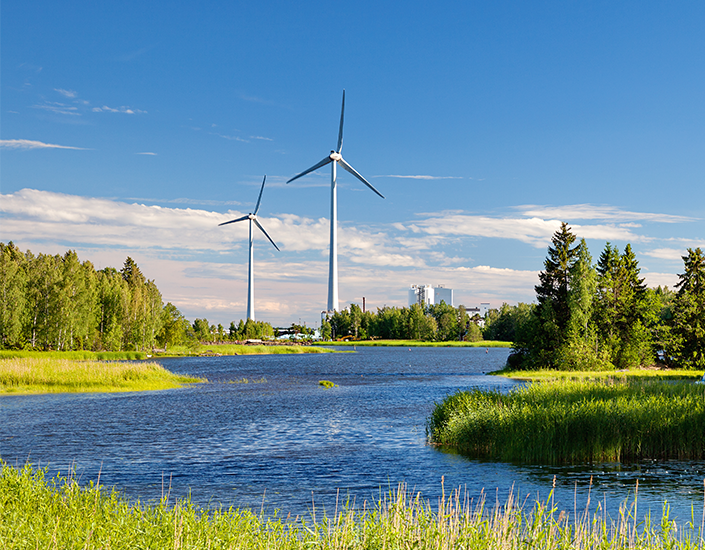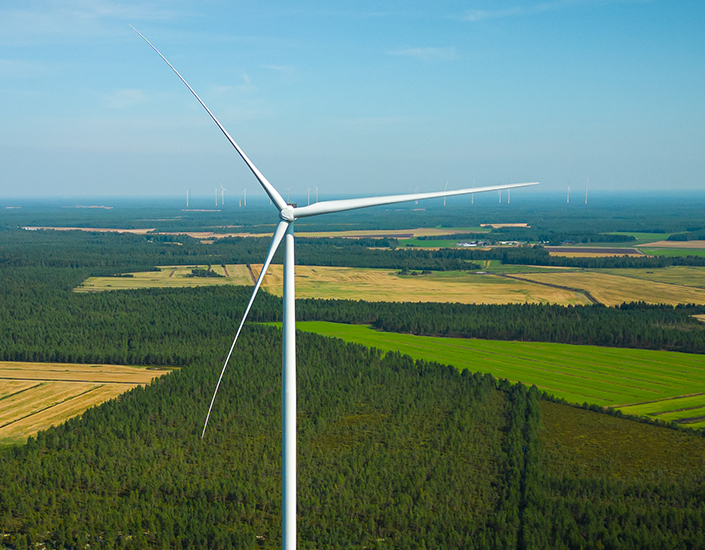Renewable energy projects



Landowners
You will benefit VSB offers a wide range of partnership opportunities. You can make a key contribution to the energy revolution in your region and be a part of the bigger change. By taking part in a wind farm project, you ensure long-term lease income. Together we will develop environmentally friendly and responsible energy production. Take contact!
Global warming
The melt rate of polar and glacial ice has increased, the sea levels are rising, and extremes in weather patterns (drought and flood) are becoming more common. These are all directly linked to global warming. read more
Global warming refers to the increase in the average temperatures which is caused by the industrial release of carbon dioxide into the atmosphere.
At the Paris climate conference in December 2015, 195 countries adopted the first-ever universal, legally binding global climate deal. read more
The agreement sets out a global action plan to put the world on track to avoid dangerous climate change by limiting global warming to well below 2°C. read more
This will be achieved by reducing CO² emissions in energy generation, industry, heating and transport.
For energy generation this will mean that peat, wood, coal, gas and all oil products will not be used as fuel. read more
The world’s population is growing, and also the requirement for electricity. To meet the extra demand caused by the removal of fossil fuels, wind energy is regarded as the most efficient and cost-effective alternative.
Harnessing wind and solar energy
Wind power is clean and safe - it does not pollute the air, soil or water, nor does it deplete water resources. read more
Wind power is economical – the wind is a free and unending raw material and there are practically zero variable costs.
Wind power brings investment, tax income and enhances the image of municipalities, as well as bringing new opportunities for economic development.
Wind power improves national energy self-sufficiency and lowers the overall cost of imported energy.
Wind power production lowers the cost of electricity. The cost of wind power is very low when indirect costs are also included in the calculation.
Wind energy can be installed and commissioned very quickly compared to other energy sources.
One 6 MW wind turbine will generate enough electricity to supply 5,500 average households, and offset 15,000 tonnes of CO².
Wind turbines will generate 40-70 times more energy than is required for their manufacture, transportation, construction and demolition. read more
One hectare of solar power, depending on the area, can accommodate approximately 0.8 MWp of capacity. In Finland, 1 MWp of solar power can generate about 850–1050 MWh/MWp of energy annually. Therefore, one hectare of solar power can produce approximately 700–840 MWh of energy. A 6 MW wind turbine generates about 20,000 MWh of electricity per year. To generate the same amount of electricity with solar energy, a solar power plant of approximately 20–30 hectares in size would be needed.
Optimal site selection
When searching for a suitable wind farm site, we consider a variety of criteria. We assess suitable sites thoroughly in terms of their eligibility for approval, wind potential and the resulting profitability. When evaluating sites, we consider conservation laws and infrastructure conditions. Only locations which fulfil all criteria can create win-win situations for all stakeholders involved.
In solar power projects, the criteria for a suitable area include not only solar radiation but also the suitability of the soil for construction, proximity to the electrical grid, and the ecological and conservation values of the area. In the construction of solar power plants, efforts are made to utilize flat, well-suited areas where the removal of vegetation can be minimized. Examples of such areas may include decommissioned peat production areas, fields, and wastelands.
Wind and solar farm design
Wind farm developers are strictly controlled by laws relating to environmental protection, building regulation and permitting. read more
Wind farm infrastructure requires a relatively minimal occupation of surface area - so most agricultural and industrial activities are not restricted in any way.
The permitting process for a solar power project depends on the project's scale, location, and municipality, as there is currently no national guidance for the development of solar power plants. Typically, solar power projects are carried out as land use planning decisions, where an environmental impact assessment process (EIA) is not required. However, ecological surveys are conducted to support the land use planning application. The extent of these surveys depends on the scale of the project and its potential cumulative impacts in conjunction with other projects in the area.
Please contact us if you have any questions about wind-, solar- or hybrid farm design, construction and commercial operation.
- Meteorology
- Wind turbine mechanics
- Environmental impacts
- Flora and fauna
- Visual and audible impact
- Impact on radio & TV
Zoning
- Permits to land use and building
- Social impact
- Construction
- Electricity market
- Operation and maintenance
- Dismantling and landscaping
- Joint procedure - EIA and zoning as one process
- PPA – Long term power purchase agreements
- Wind turbine infrasound
Professional project planning
In order to reach sustainably planned and environmentally friendly renewable energy projects, VSB utilizes its professional network, state-of-the-art measurement methods and expert opinions.
We keep a close eye on the nature conservation aspects of the potential wind or solar farm site throughout the planning. Detailed reports and findings from the long-term analysis on the species present and their habitats are delivered and evaluated. An important part of planning process is also the design of the grid connection and the required cable routes.
Successful implementation
When detailed planning is concluded, project enters the approval phase. We compile all the application documents required by the authorities, including the analyses, statements, detailed construction plans and compensatory measures to protect the landscape – and submit them to the responsible authorities.
Since the EIA and the planning process are finished and the construction plans are legalized, the project is ready to be implemented. Before the construction work begins, VSB negotiates long term power purchase agreements (PPA). After construction of the necessary infrastructure, the wind turbines and/or solar panels are being assembled and the energy production can begin.
Repowering
Wind turbine technology has changed a lot in the past 15 years: the turbines are more powerful and have less noise impacts. VSB benefits from the longstanding procurement relationships with renowned turbine manufacturers, ensuring that the strictest quality requirements are fulfilled for a reliable and low-maintenance operation.
Solar power plant
A solar power plant consists of solar panels, panel mounts, wiring, and other necessary infrastructure. Depending on the used surface area, a solar power plant can have from thousands to hundreds of thousands of panels. Panels are installed on mounts, with typically 40–80 solar panels on an individual mount.
Currently, the primary solar panel technology is monocrystalline silicon. Depending on the technology, a panel can harness approximately 22% of the sunlight it receives at its best. Panels can also be bifacial, allowing them to capture radiation from both sides of the panel.
Solar panel technology is advancing rapidly, and in the future, it is likely that much more efficient panels will be in use compared to the current ones.
Hybrid project
A hybrid project refers to an initiative where both wind and solar power are built on the same area. This provides several advantages: the energy production in the area is more consistent, as typically there is less wind when the sun is shining, and vice versa. Additionally, solar energy is generated more during the summer, while wind energy is more prevalent in the winter.
By combining solar and wind power, the same grid connection can be used, reducing the disruptions caused by constructing separate grids.



